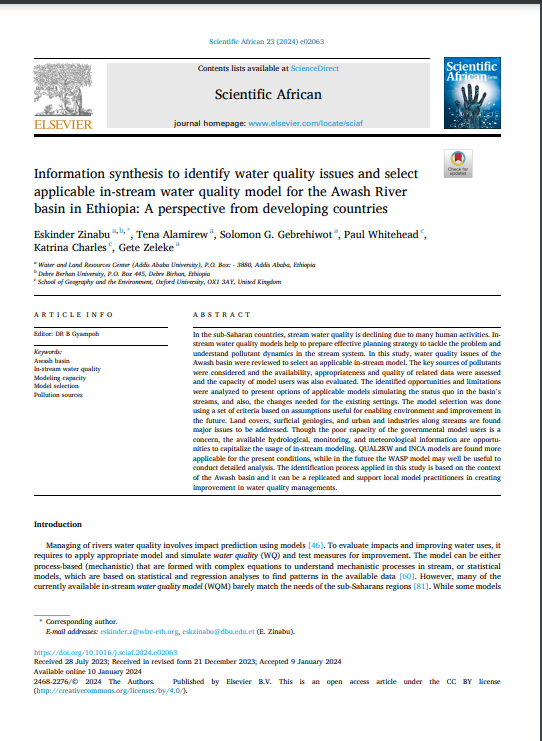Eskinder Zinabu, Tena Alamirew, Solomon G. Gebrehiwot, Paul Whitehead, Katrina Charles, and Gete Zeleke
In the sub-Saharan countries, stream water quality is declining due to many human activities. In-stream water quality models help to prepare effective planning strategy to tackle the problem and understand pollutant dynamics in the stream system. In this study, water quality issues of the Awash basin were reviewed to select an applicable in-stream model. The key sources of pollutants were considered and the availability, appropriateness and quality of related data were assessed and the capacity of model users was also evaluated. The identified opportunities and limitations were analyzed to present options of applicable models simulating the status quo in the basin’s streams, and also, the changes needed for the existing settings. The model selection was done using a set of criteria based on assumptions useful for enabling environment and improvement in the future. Land covers, surficial geologies, and urban and industries along streams are found major issues to be addressed. Though the poor capacity of the governmental model users is a concern, the available hydrological, monitoring, and meteorological information are opportunities to capitalize the usage of in-stream modeling. QUAL2KW and INCA models are found more applicable for the present conditions, while in the future the WASP model may well be useful to conduct detailed analysis. The identification process applied in this study is based on the context of the Awash basin and it can be replicated and support local model practitioners in creating improvement in water quality managements.

